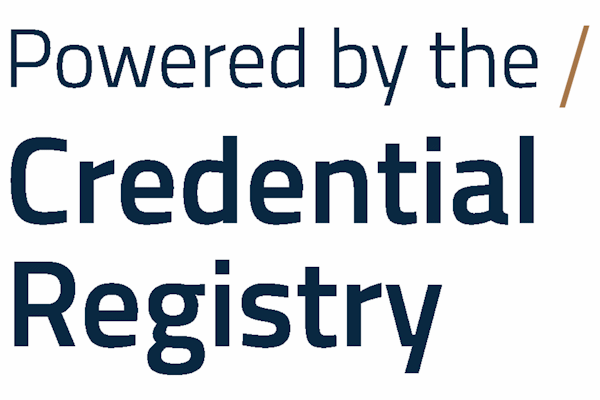Announcing 89 Certified Six Sigma Green Belts
These individuals have completed the requirements for earning the Certified Six Sigma Green Belt designation.
They have gained hands-on experience with the most common Six Sigma tools, completed a Six Sigma project, and passed the certification exam.
As a Six Sigma Green Belt, they are able to manage projects, collect data, analyze data, design and implement improvements, and promote continuous improvement.
Congratulations to the following for earning a Six Sigma certification:
- Aaron McClanahan
- Alexa Jaffe
- Alexis Casillas
- Alexis Thompson
- Alfred Jessee
- Alisha Reader
- Amanda Woppel
- Amelia Bing
- Amir Ayoub
- Anastasia Vissicchio
- April Stingo
- Ashley Combs
- Ashok Thomas
- Brandon Haynes
- Bryan Gram
- Caitlin Scardina
- Carl Edmonds
- Cecilia Delamater
- Charles Wouters
- Christi Campos
- Christopher Hallo
- Clay Knight
- Cody Diener
- Craig Davis
- Dallas Rein
- Daniela Aguayo
- Danielle Sanders
- Dustin Sellers
- Fallon Klenotich
- Gregory Kustarz
- Heather Porter
- Henry Ngo
- Hermon Tekle
- Jack Puccetti
- James Walker
- Janna Huffman
- Jason Deonarain
- Jennifer Moffet
- Jessica Scott
- Jesus Rodriguez Carbajal
- Johan Daniel
- John Schnack
- John Vitale
- Jonathan Pannia
- Joseph Domizio
- Joshua Hosch
- Joshua Yates
- Jude Aduka
- Kathryn Shepard
- Kendra Smith
- Kimberley Mullen
- Kurt Reeves
- Kwaivian Terry
- Laura Wegener
- Lidia Attalla
- Lisa Cuellar
- Lisa Fotheringham
- Lizzette Ballas
- Lydia Priest
- Mallori Booker
- Marquette Moore
- Mary Simpson
- Michael Blaes
- Michael Putnam
- Nathan Ware
- Nicholas Buchanan
- Nickolas Lane
- Nissi Thomas
- Nkanu Thelma Ubi
- Oscar Saez
- Patrick Defourneaux
- Peter Chase
- Peter Dulik
- Peyton Brooks
- Rhonda Brumley
- Rita Jean-Pierre
- Russell Daumer
- Ryan Lemasters
- Salam Mohammed
- Shaun Lewis
- Stacy McCall
- Suzanne Green
- Sydney Payne
- Sydney Smith
- Taylor Mottolo
- Tia Bryant
- Tiffany Adkins
- Tiffany Cummins
- Trayana Rogers
- Uchenna Cyril-Obi
- Wesley Brown
Who Are Certified Six Sigma Green Belts?
This program is designed for all types of individuals working for any organization using the Six Sigma improvement methodology.
Examples include individuals working in:
- Healthcare Services
- Product Development
- Maintenance
- Human Resources
- Manufacturing
- Customer Service
- Supply Chain
- Sales
- Food Service
- Engineering
- Logistics
- Retail
- Information Technology
- Financial Services
- Field Service
- Marketing
- Hospitality Services
- Sourcing
- You
Six Sigma works on any functional area which has variation!
The project-oriented case study used for this course supports people from any functional area and gives this class a competitive advantage you won’t find with most other classes.
















Top 5 Personal Benefits of Earning a Six Sigma Green Belt Certification
Career Advancement
Our Certified Six Sigma Green Belt course provides a complete package of education, application, and coaching for those seeking to learn and gain hands-on experience with the methodology and tools used for Six Sigma projects. As a Green Belt, you will be able to manage projects, collect data, analyze data, design and implement improvements, and promote continuous improvement. Success with Six Sigma projects and continuous improvement efforts will help propel your career.
Organizational Value
Managing Six Sigma projects will deliver significant performance improvement for your organization. Reducing variation will improve the quality of products, services, and processes. Equipped with a solid understanding of Six Sigma principles, concepts, and terms, you will collaborate effectively with stakeholders and project team members to deliver exceptional results and promote a culture of continuous improvement.
Knowledge Validation
A Six Sigma credential validates your understanding of Six Sigma principles and methodologies, providing employers with assurance of your knowledge. As members of the Credential Registry, an organization dedicated to providing up-to-date information about all credentials, we ensure your certification is recognized and verifies your knowledge and capabilities.
Collaborative Community
Through our Six Sigma program, you gain valuable skills and become part of a thriving community of Six Sigma professionals. As Thom Mandl emphasizes in his article on Top 5 Reasons to Earn a Certification, engaging with this community offers invaluable networking opportunities and access to industry events, allowing you to stay current with best practices and emerging trends.
Continuous Improvement
Self-improvement is essential for thriving in today's world. Investing in personal development not only enhances individual capabilities, but also contributes to organizational success. People who continuously seek opportunities for growth, will bring fresh perspectives and innovative ideas to their organization.
Should you be next?
Would you benefit by continuing your education and becoming a Six Sigma Green Belt in your organization?
The Certified Six Sigma Green Belt program will supply you the knowledge and skills required to use the most common Six Sigma tools.
Isn't it time...
Credential Registry
We are members of the Credential Registry, an organization dedicated to providing up-to-date information about all credentials, a common description language to enable credential comparability, and a platform to search and retrieve information about credentials.
The best credentials are found at the Credential Registry.
Learn more at Credential Registry.
FAQs
How does Certified Six Sigma Green Belt relate to the other certification levels?
Six Sigma Yellow Belt is the introductory certification for the principles, concepts, and terms which everyone “must understand” in any organization using the six sigma improvement methodology.
Six Sigma Green Belt, this certification, is for those wanting to learn the Six Sigma methodology in order to independently manage Six Sigma projects. It provides a complete training package of tools education coupled with a hands-on project using a specially designed case study.
Six Sigma Black Belt is the advanced certification for one wanting to lead major projects and coach teams in designing robust solutions. You will work on a customized Six Sigma project for your organization.
You can learn more at Six Sigma Belts.
How long does it take to obtain a Six Sigma Green Belt certification?
For most people, your time investment will be about 4 to 6 hours per week for 14 weeks. Since the course is self-paced, you can go faster or slower.
What is involved with the Six Sigma Green Belt project?
As you work to get Green Belt certified, you will learn and apply all of the elements of the Six Sigma methodology with a specially designed case study. Learning the tools, and where to use them, is a key element which sets this Six Sigma training course apart from some of the others.
The case study will allow you to learn and apply the 5 steps of Six Sigma, defined as Define, Measure, Analyze, Improve, and Control and also known as DMAIC. You will work with a database, which allows you to conduct statistical analysis and create the most common charts and reports used for Six Sigma projects.
What support will be available to me as I complete my Six Sigma certification?
Your assigned coach, will be available based on your preferences. You can connect with your coach via email, telephone, Zoom meetings, or through the learning management system. This customized approach allows you to get the most out of the course.
We are passionate about developing Six Sigma leaders through education, application, and coaching. You will not be alone on this journey of discovery.
Can my organization go through Six Sigma certification as a group?
Yes. It is very common for an organization to send waves of people through training. A Six Sigma improvement program is more energized and successful when everyone is on the same page.
Contact us to learn more.
How long does a Six Sigma certification last?
Our Six Sigma certifications need to be renewed every 3 years.
Our certification maintenance program is focused on keeping your skills refreshed through continuing education, improvement projects, and giving back.
Find more at Certification Maintenance.
How is Six Sigma different from Lean Six Sigma?
Lean and Six Sigma are two very important methodologies which should be studied independently to truly appreciate their power to transform organizations.
Research into Lean Six Sigma reveals it is much more about Six Sigma and tends to have very little about the rich features of a Lean Transformation. Lean Six Sigma will often treat Lean as a collection of tools, you can sometime use when you work on a Six Sigma project. Lean Transformations are much more than a collection of tools and you will not learn much about Lean in a Lean Six Sigma class.
You can learn more at What is Lean Six Sigma?
Can a Six Sigma certification be integrated with other management systems?
Yes. Six Sigma certifications can easily fit into other management systems.
Its structured methodology builds strong skills in any organization looking to improve products, services, and processes by reducing variation. It is a great compliment to other management systems focused on driving business results.

Six Sigma Belts
Professional Certifications
Certified Six Sigma Green Belt
Certified Six Sigma Black Belt
Subscribe to our newsletter
About Transformance Advisors
Our team at Transformance Advisors is dedicated to crafting sustainable organizations by providing comprehensive solutions which empower individuals and organizations to achieve success. Based in Boulder, we specialize in Lean Transformation, the #1 organizational improvement program.
We lead the industry by leveraging online and hybrid approaches to provide education and coaching to organizations and individuals. We support organizations seeking to empower their employees to improve processes and deliver continuous improvement, as well as individuals seeking professional credentials to document their knowledge and propel their careers.





 Transformance Advisors Team Wins Global Educator Challenge
Transformance Advisors Team Wins Global Educator Challenge